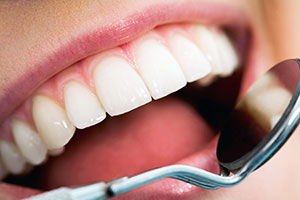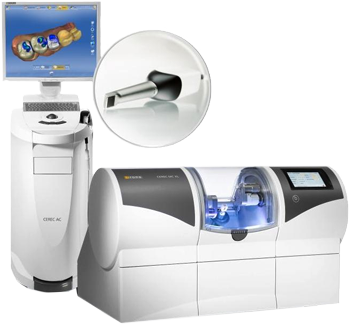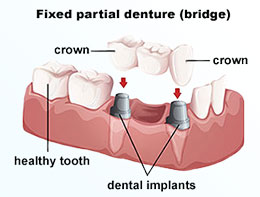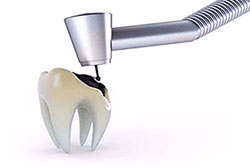Call: (843) 569-8795
General Dentistry
Dental Exam

There's nothing to fear with a dental exam. Your teeth will be visually examined for signs of plaque, tartar and tooth decay. Your gums will also be examined for puffiness or discoloration, which are signs of gum disease. A full set of dental X-rays may also be taken during your dental exam, to enable your dentist to see below the surfaces of your teeth. Dental exams typically end with a dental cleaning, to remove surface stains and buildup.
Panoramic Digital Dental X-Ray
Dental X-rays have come a long way. Todays dental X-rays are safer, faster, more comfortable and more informative than the X-rays of years past. Digital X-rays, one of the latest and most advanced dental technologies, produce high-quality images of your teeth that can be viewed instantly by you and your dentist on a LCD monitor. Digital X-rays reduce radiation by up to 90% and provide exceptional diagnostic information to ensure that potential problems are caught in their earliest stages. Intraoral photography is another alternative to traditional dental X-rays. With intraoral photography, problems such as cavities, fractures and discolorations in the teeth are captured through clear and sharp photographic images that are taken with a 35mm or digital camera.
Teeth Cleaning

A laser teeth cleaning, also known as an ultrasonic cleaning, is a popular alternative to traditional teeth cleanings. With a laser teeth cleaning, an ultrasonic scaler (rather than a manual probe) is used to remove deposits, kill harmful microbes and eliminate bacteria around the teeth and gums through high-frequency sound waves. Many patients find laser teeth cleanings more comfortable than traditional teeth cleanings because they are quicker, quieter and pain-free.
A deep cleaning may be recommended if excessive plaque and tartar deposits have developed below the gum line. Deep cleanings, also known as scaling and root planing, involve a two-part process: first, the stubborn deposits are removed, and then the root surfaces are smoothened. A deep cleaning helps prevent periodontal disease and restores gum tissues to a healthy state.
Oral Cancer Screening
Oral cancer affects nearly 35,000 Americans every year. The keys to surviving oral cancer are early detection and early treatment. This starts with a regular oral cancer screening – at least once every six months. An oral cancer screening takes just minutes, is pain-free and can be performed during regular dental exams. If you are male, a regular oral cancer screening is especially critical: Oral cancer is more than twice as common in men as it is in women. Other people at high risk of oral cancer include people over the age of 60, tobacco smokers and heavy drinkers.
Dental Fillings
If you've been told you need a dental filling, you're not alone: 92% of Americans have had at least one cavity. Dental fillings are the tried-and-true treatment for treating cavities – and they come in a variety of options to suit every need. Dental fillings can be made of silver amalgam, composite, porcelain and even gold. Amalgam fillings have been used by dentists for more than a century yet have been under much scrutiny in the health profession because of the mercury content. Insurance companies still consider metal mercury fillings to be the most cost-effective type of dental filling for back teeth regardless of your health. Composite fillings, which are made of a tooth-colored plastic and glass composite, are quickly becoming the preferred dental filling due to their natural appearance, durability and no metal or mercury content. The type of dental filling used in this office for fillings is tooth colored composite only, as we care about your health more than your insurance company does. This is a slight upcharge for this service, as the insurance will only reimburse back teeth as metal filings. You will be quoted your out of pocket expense prior to any treatment in our office.
At Sensational Smiles of Charleston we are always upfront about all expenses and never want any surprises, for you or us!
White Fillings
If your silver fillings make you feel self conscious when you smile, or it's simply time to replace them, consider white fillings. White fillings are just as durable as they are attractive! Made of composite resin, white fillings match the natural color of your teeth and are an excellent option for small to mid-sized cavities. White fillings are strong, stain-resistant and require less removal of your tooth structure than amalgam fillings.
CEREC Crowns
CEREC crowns are one of most innovative dental technologies to ever emerge. With CEREC crowns, you don't have to worry about messy impressions, temporary dental crowns, or multiple dental visits. CEREC crowns are made right in the dentist's office and are placed in just one visit. CEREC crowns look great, too. Made of pure porcelain and no metal, CEREC crowns look and feel like your real teeth. The convenience, comfort and beauty of CEREC crowns are unbeatable!

Dental Bridges
Dental bridges have been used for centuries to replace missing teeth. Today, dental bridges are still considered one of the most durable, conservative and cost-effective options for bridging the gap between a missing tooth and surrounding teeth. Comprised of two anchoring teeth and a replacement tooth, dental bridges help prevent surrounding teeth from drifting out of position, improve chewing and speaking, and help keep your natural face shape in tact.

Dental bridges typically take 2-3 weeks to complete and are less invasive than other options, such as dental implants. With good oral hygiene and regular dental visits, dental bridges can last up to 30 years.
Invisalign Braces
When it comes to “invisible” braces, Invisalign braces are the gold standard. Unlike traditional dental braces, which use brackets and wires to straighten teeth, Invisalign braces use a custom-made series of clear plastic aligners that are completely removable. The comfort and convenience of Invisalign braces are unbeatable. You can eat whatever you want; you can remove Invisalign braces whenever you need to; and you can brush and floss more effectively. Invisalign braces are effective for patients who have problems with crowding, spacing, crossbites, overbites and underbites.
Gum Disease Treatment
Red, swollen gums are a red flag for one thing: gum disease. If you have the symptoms, you're not alone. More than 80% of adults have some form of gum disease. Fortunately, there are many effective and pain-free gum disease treatments. For gingivitis, the mildest form of gum disease, treatment typically involves a thorough dental cleaning, followed by daily brushing and flossing. Advanced gum disease, also known as periodontal disease, requires scaling and root planing to remove stubborn deposits below the gum line. Laser gum surgery, a new alternative to scaling and root planing, uses beams of high-speed light to remove plaque and tartar buildup. If non-surgical methods of gum disease treatment are ineffective, a gingivectomy, or periodontal surgery, may be necessary.
Endodontics

Oral Surgery
Oral surgery is an umbrella term for surgical treatments such as dental implants, wisdom teeth extractions and bone grafting. Dental implants, an excellent solution for missing teeth, are surgically placed tooth roots that hold dental crowns in place. A wisdom tooth extraction may be recommended if there isn't enough room in your mouth to accommodate wisdom teeth and they become impacted, partially erupted or infected. Bone grafting transfers bone from one part of the jaw to another, usually to accommodate a dental implant. While a general dentist can perform some oral surgery procedures, an oral surgeon is required for others.
Oral Sedation Dentistry
Ever wish you could sail through dental visits without anxiety or fear? Would you rather endure an agonizing toothache than go to the dentist? Answering “yes” to these questions could mean that you're a perfect candidate for sedation dentistry. With sedation dentistry, you can forget about fear and focus on pure relaxation.
Minimal sedation involves inhaling nitrous oxide (“laughing gas”). Nitrous oxide helps you relax and wears off quickly. Conscious sedation is a moderate level of sedation that causes drowsiness and is taken in pill form.
Pediatric Dentistry

In-Office CT Scan (3D Cone Beam)
More and more orthodontists, oral surgeons and other dental specialists are using a new dental imaging technology called 3D cone beam scans – and for good reason. 3D cone beam scans produce high-quality 3D images of teeth, teeth roots, jaws and even the skull. These 3D images allow dental professionals to identify potential problems that oftentimes go unnoticed with traditional dental images. 3D cone beam scans have benefits for patients, too: they emit far less radiation than traditional dental X-rays!
In-Office CT Scan (CAD CAM)
Dental visits will never be the same, thanks to the development of high-tech dental technologies such as the CAD CAM (Computer Aided Design/Computer Aided Manufacturing). With CAD CAM technology, dentists can take high-quality images of the teeth and use those images to design a premium dental restoration on a computer – all in one visit! CAD CAM takes less time, reduces discomfort and produces outstanding results.
